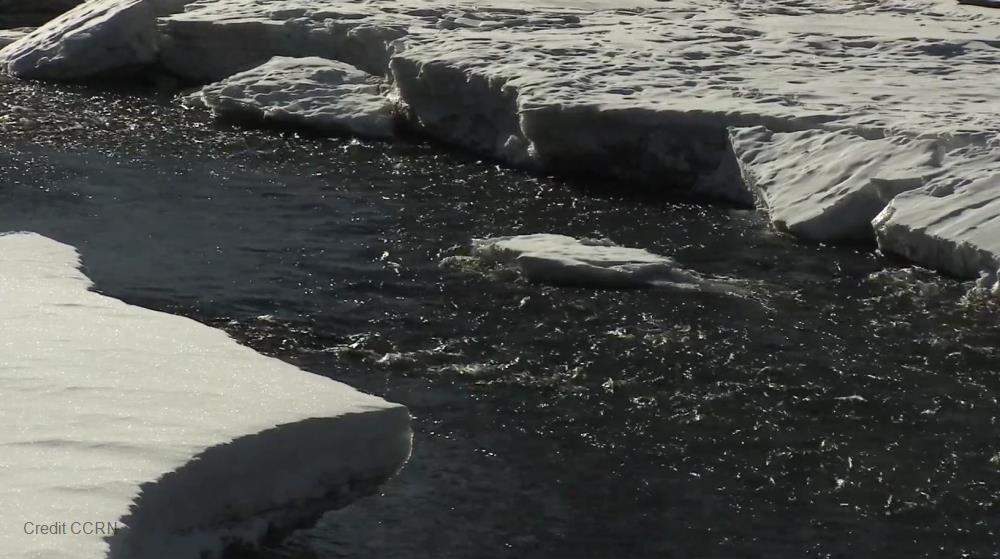
Related items loading ...
Section 1: Overview
Name of Research Project
|
Related Project
|
Part
|
|
GWF-TSTSW: Transformative Sensor Technologies and Smart Watersheds
|
Work Package 1
|
|
|
|
|
|
|
Program Affiliations
Related Research Project(s)
|
GWF-TSTSW: Transformative Sensor Technologies and Smart Watersheds | |
Dataset Title
Ground Water Discharge and Permafrost Thaw Data using Remote Sensing and Geophysical and Numerical Techniques in the Central Mackenzie Valley, Northwest Territories
Additional Information
Creators and Contributors
|
David Rudolph | PI | drudolph@uwaterloo.ca | University of Waterloo |
Brittney Glass | Originator | | University of Waterloo |
Andrew Wicke | Collaborator | awicke@uwaterloo.ca | University of Waterloo |
Abstract
Landsat 4-5 Thematic Mapper (TM) imagery from 2004, 2009, and 2016, as well as RapidEye-3 imagery from 2017, was used to identify surface icings in the CMV. Icings are ice lenses which form on the land surface during the winter as a result of groundwater discharge. Icings may be of a permanent or intermittent type. A series of image algorithms were applied to the data to extract the location of icings, which are then used as an indicator of groundwater discharge. Recurring icings from the 4 sampled years were then computed using an intersection.
RapidEye-3 imagery from 2011-2017 was used to identify regions of continually degrading vegetation using biomass indices. Two year pairs (e.g. 2011-2012, 2012-2013, etc.) were compared to find intersecting pixels of degrading vegetation, and then ‘negative’ change pixels were extracted from the imagery. The negative change pixels from each two year-pair were then compared to find areas which have been continually degrading since 2011. Comparing images in this way partially eliminates effects of seasonality. The identified regions were compared to in-situ thermistor data collected by Husky Oil at several monitoring stations, and the results were well correlated.
Purpose
The first goal of this project was to utilize remote geophysical imagery to identify groundwater (GW) discharge zones in the Central Mackenzie Valley (CMV) of the Northwest Territories. The CMV is a proposed shale oil development region and, is therefore, vulnerable to environmental degradation and surface/groundwater contamination, associated with hydraulic fracturing. Determining locations of groundwater discharge at the surface provides information about potential pathways with which contamination could reach the surface. Additionally, characterizing groundwater discharge locations also contributes to a better overall understanding of the region’s hydrogeology. This work was able to successfully utilize remotely sensed optical and thermal data to identify recurring groundwater discharge zones and their relative sizes.
The second goal of this work was to identify regions of continually degrading vegetation within the CMV. Degraded vegetation represents areas where permafrost may be thawing, as it creates saturated subsurface conditions, in which most tree species cannot survive. Indigenous groups living in the CMV rely on traditional hunting and gathering methods to sustain their communities. Degrading forest cover, therefore, has significant impacts on the sustainability of these communities. Additionally, thawing permafrost plays an important role in the region’s hydrologic cycle, and should be understood in greater detail. This work was able to identify vegetated regions which have been continually degrading since 2011; the results were in agreement with in-situ permafrost monitoring data.
This data set is collected for the project titled “Transformative sensor Technologies and Smart Watershed(TTWS): Work Package 1". TTWS a Pillar 3 project under the Global Water Futures Program funded by Canada First Research Excellence Fund.
Plain Language Summary
Keywords
|
Contaminants |
Central Mackenzie Valley, Northwest Territories, Canada; Bogg Creek Watershed, Northwest Territories, Canada |
Citations
Rudolph, D., Glass, B., and Wicke, A. (2019). Ground Water Discharge and Permafrost Thaw Data using Remote Sensing and Geophysical and Numerical Techniques in the Central Mackenzie Valley, Northwest Territories. Waterloo, Ontario: Canadian Cryospheric Information Network (CCIN). Unpublished Data.
Additional Citation: Brittney Glass (2019). Examining Hydrogeological Processes in Freezing Soils using Remote Geophysical and Numerical Techniques. UWSpace.
http://hdl.handle.net/10012/14466
Section 3: Status and Provenance
Dataset Version
Dataset Creation Date
Status of data collection/production
Dataset Completion or Abandonment Date
Data Update Frequency
Creation Software
Primary Source of Data
Other Source of Data (if applicable)
Data Lineage (if applicable). Please include versions (e.g., input and forcing data, models, and coupling modules; instrument measurements; surveys; sample collections; etc.)
Section 4: Access and Downloads
Access to the Dataset
Terms of Use
Does the data have access restrictions?
Downloading and Characteristics of the Dataset
Download Links and Instructions
Go and see David Rudolph
Total Size of all Dataset Files (GB)
File formats and online databases
Other Data Formats (if applicable)
List of Parameters and Variables


 GWFNet
GWFNet Master
Master Data
Data Research
Research Map
Map
 Advanced
Advanced Tools
Tools
 . . .
. . .
 Metadata Editor
Metadata Editor
 Record List
Record List
 Alias List Editor
Alias List Editor
 Legacy sites
Legacy sites